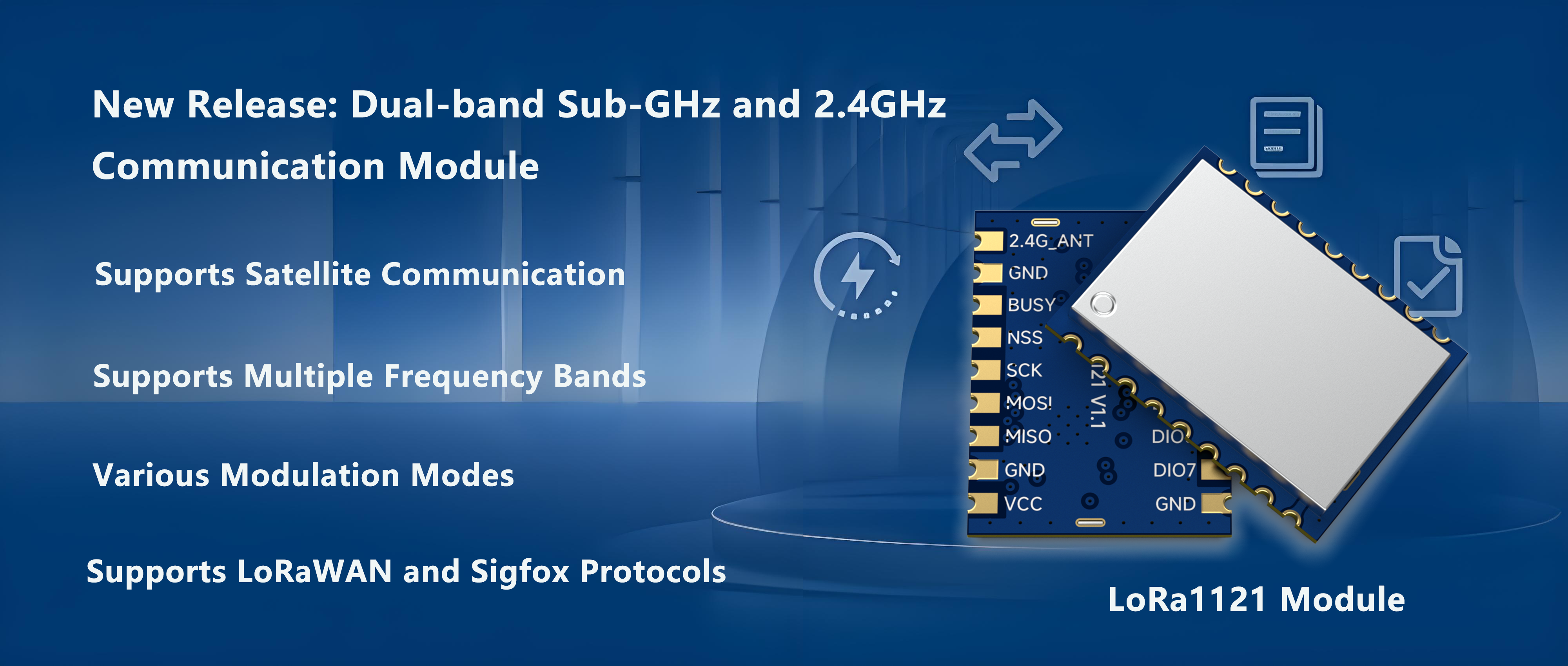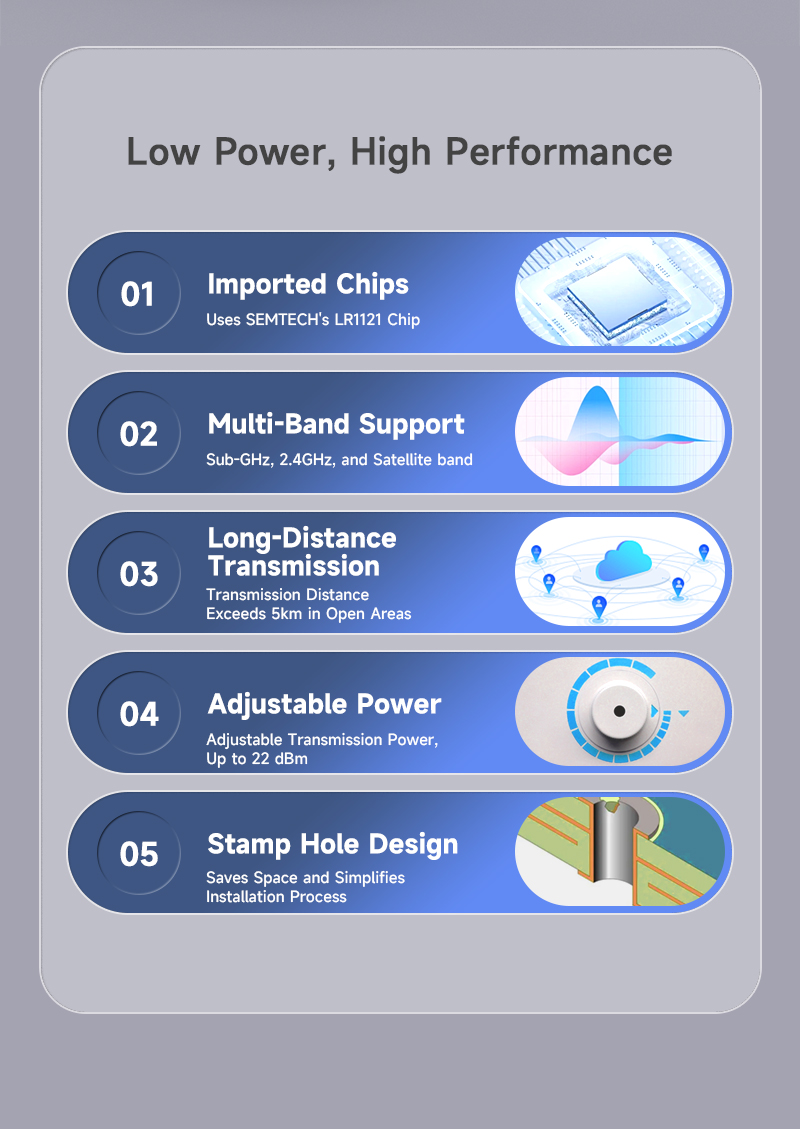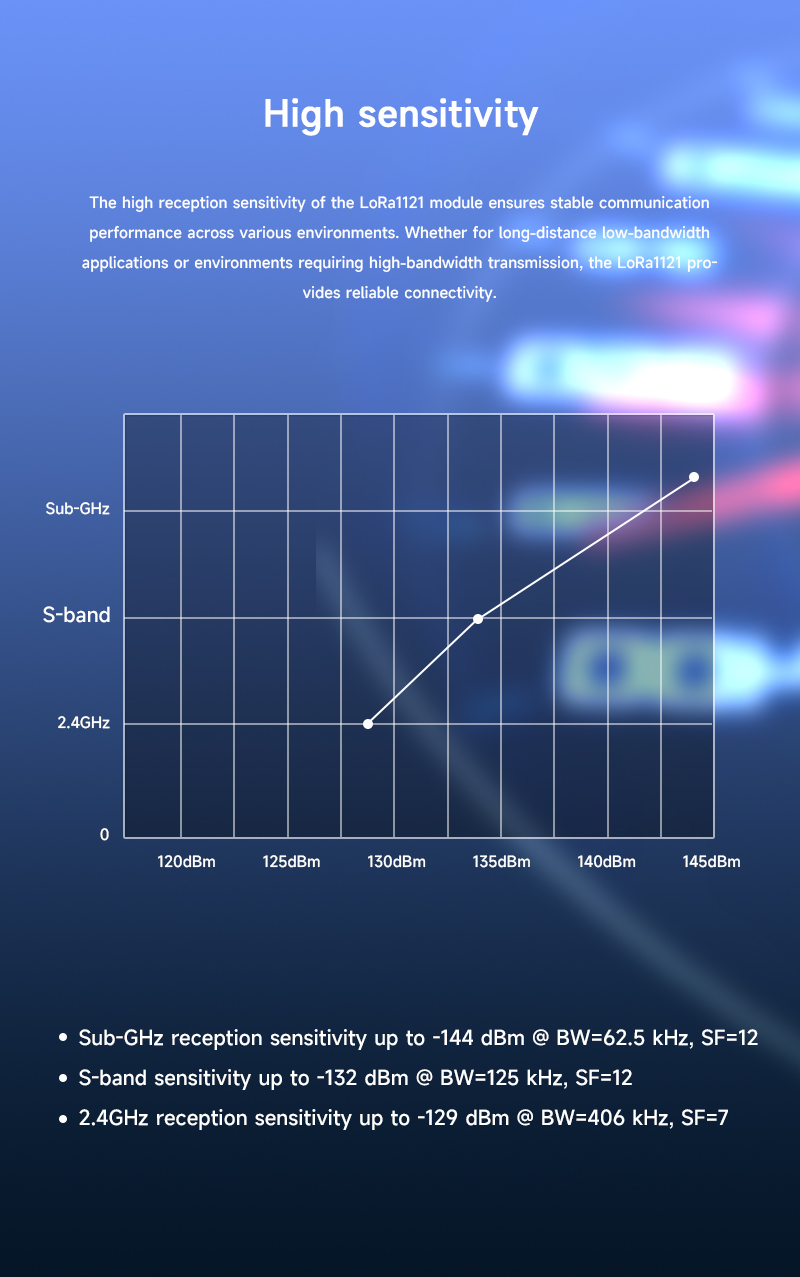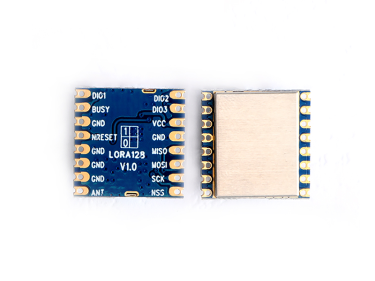What are the advantages of a communication module that is compatible with both SUB-GHz and 2.4G communication?
With the rapid development of IoT and wireless communication technology, the demand for high-performance, low-power, and wide-coverage communication modules is increasing. Especially in fields such as IoT, industrial automation, and smart homes, the complexity of communication environments and the diversity of application scenarios place higher demands on the stability, compatibility, and coverage of devices. To meet these diverse needs, NiceRF has recently launched a new wireless communication module compatible with both SUB-GHz and 2.4G frequency bands. These modules, with their cross-band compatibility and flexibility, can effectively enhance the performance of wireless modules in complex communication environments.
Characteristics of SUB-GHz and 2.4G Frequency Bands
The SUB-GHz frequency band refers to radio frequencies below 1 GHz. Due to the lower attenuation of wireless signals in the SUB-GHz band, these signals can cover greater distances compared to higher frequency bands like 2.4 GHz. Additionally, lower frequency signals are better at penetrating obstacles such as walls and trees, making the SUB-GHz band particularly effective in urban environments or indoor applications. Moreover, the radio spectrum in the SUB-GHz band is typically less crowded than the 2.4 GHz band, reducing the risk of signal interference. This makes it well-suited for applications like smart home devices, smart agriculture, and industrial automation.
The 2.4G frequency band is almost universally open and license-free, meaning that device manufacturers can develop products for global markets without worrying about spectrum restrictions in different countries or regions. Due to its higher frequency, the 2.4G band supports higher data transmission rates, making it suitable for applications that require the transfer of large amounts of data, such as video streaming, online gaming, and file transfers.
The SUB-GHz and 2.4G frequency bands each have their own characteristics. If both can be supported, it will better leverage their respective advantages and compensate for the limitations of a single frequency band, offering users a wider range of options.
LoRa1121 Communication Module: Compatible with SUB-GHz and 2.4G Communication
LoRa1121 is a communication module developed by NiceRF, based on the Semtech LR1121 chip. It offers multi-band LoRa and long-range frequency hopping spread spectrum (LR-FHSS) communication, supporting connections below 1 GHz, 2.4GHz, and ISM bands. The module supports various modulation methods such as LoRa, (G)FSK, and Sigfox, and allows for frequency customization within the 150-960 MHz range, meeting the requirements of the LoRaWAN specification. The multi-band compatibility further enhances the module's flexibility in deployment.
Features of LoRa Module LoRa1121
UHF Bands :433/470MHz/868/915MHz
Customizable frequency range :150~960 MHz
2.4G band :2400-2500MHz
S band :1900MHz-2200MHz
Transmission distance :>5000 meters at sub-GHz in open area
S band sensitivity : up to -132 dBm@ BW=125 KHz, SF=12
2.4GHz reception sensitivity :up to-129dBm @ BW=406 KHz, SF=7
Sub-GHz reception sensitivity:up to -144dBm @ BW=62.5 KHz, SF=12
Transmitter power is adjustable, up to 22 dBm
Sleep current < 1µA
ReceiveSmall size, stamp hole design
From the main features of the LoRa1121, we can see that its cross-band compatibility offers several advantages:
Dual-Band Operation: The standout feature of this module is its ability to simultaneously support both SUB-GHz (e.g., 433 MHz, 868 MHz, 915 MHz) and 2.4G frequency bands. This dual-band compatibility allows the same module to flexibly switch communication bands in different application scenarios, meeting regulatory requirements across different countries and regions.
High Sensitivity and Low Power Consumption: Modules compatible with both SUB-GHz and 2.4G frequency bands typically feature highly sensitive receivers that can operate reliably even under low signal conditions. The LoRa1121 offers high sensitivity across ISM, SUB-GHz, and 2.4G bands, ensuring reliable connectivity in both long-distance, low-bandwidth applications and environments requiring high-bandwidth transmission.
Balancing Data Rate and Transmission Distance: The SUB-GHz frequency band excels in long-distance transmission and obstacle penetration, while the 2.4G band offers advantages in data transmission speed and global compatibility. The LoRa1121 module finds a balance between these two: using the SUB-GHz band for applications that require long-distance coverage and switching to the 2.4G band for applications that need higher data transfer rates.
Interference Resistance: Due to the widespread use of the 2.4G band, signal interference can be a significant issue. Modules compatible with the SUB-GHz band can switch to this less congested frequency when the 2.4G band is overcrowded, thereby enhancing the reliability of communication.
Multiple Modulation Techniques: Cross-band compatibility typically involves support for multiple communication protocols. The LoRa1121 supports modulation techniques such as LoRa, (G)FSK, Sigfox, and LR-FHSS. This flexibility allows it to be effectively used in different network architectures, whether for point-to-point communication or networked applications, ensuring efficient task completion.
The LoRa1121, a wireless communication module compatible with both SUB-GHz and 2.4G frequency bands, offers users a more flexible and comprehensive solution by combining the strengths of both bands. In applications that require long-range coverage, low power consumption, and strong penetration, the SUB-GHz band performs exceptionally well. Meanwhile, the 2.4G band supports high data transfer rates and global compatibility, making it ideal for applications with those requirements. By integrating these two frequency bands into a single module, users can freely choose the most suitable band based on specific needs, thereby maximizing communication efficiency and reliability.
This cross-band compatibility not only addresses the limitations of single-band modules but also opens up new possibilities for innovation and application in fields such as smart homes, smart agriculture, and industrial automation. It truly delivers optimal communication performance across diverse scenarios.
 +86-755-23080616
+86-755-23080616
 sales@nicerf.com
sales@nicerf.com
Website: https://www.nicerf.com/
Address: 309-314, 3/F, Bldg A, Hongdu business building, Zone 43, Baoan Dist, Shenzhen, China


 English
English










